Another year has just started! And apparently, we're finally walking to the end of this mess. The pandemic may disappear soon, but some of the habits that we've got will probably stay forever. We passed countless hours consuming media than in the previous years, and this is a trend that does not seem to be cooling down in 2022. So, these will still be some of the forces pushing the smartphone segment forward. For this year, we expect big advancements in this regard. So if you’re in the market looking for a device with good capabilities for consuming media, we are to serve you. We are here to bring a new edition of our “Best smartphones for Media Consumption” listing.
A new year is open, and there are a lot of new smartphones coming. We're still at the peak of the iceberg, but this month has already presented a lot of goodies. What stands right now as the best offerings for media consumers? Let's find out.
For some users, media consumption is one of the reasons that pushes forward the smartphone market. Especially with the new standards created by the pandemic. People have been prioritizing isolation, over public meetings and some cases we need to stay at home more frequently. Sometimes we just need to find ways to kill boredom. While the world is going back to its former “normal state” we know that some demands created amidst the pandemic will not leave our lives. We’re pretty sure that the sector of multimedia has become much more powerful than it was ever before. So we need smartphones that will serve our needs without hassle.
In recent times, we’ve been passing countless hours watching movies through online video streaming or gaming services, we’ve been navigating through social media feeds or we’re playing games with our handsets to kill boredom. If you need a good smartphone for media consumption’s sake, then you will need to look at some important factors – Display, Battery Capacity, and certain aspects of the hardware. We hope that on this list, you will get the necessary help to get a good smartphone. Hopefully, any of these devices will meet your needs in this particular department. We’ve elaborated a list of the top 10 smartphones for media consumption you can get in January 2022.
BEST SMARTPHONES FOR MEDIA CONSUMPTION DISCLAIMER
The devices in the list are, in our opinion, the best devices for watching Netflix and other streaming platforms such as YouTube, Twitch, etc. Moreover, they also deliver great performance and are ideal for trending apps such as TikTok, Instagram, and even Clubhouse. They can also play demanding games without much stress. So if you’re needing a device that will meet all your “multimedia needs” check out our list with good recommendations. Take in mind that these are just the best devices in our opinion. You can always have better options in your mind, so feel free to share your thoughts in the comments section. For the next month, there will be more options and a new list with our best picks.
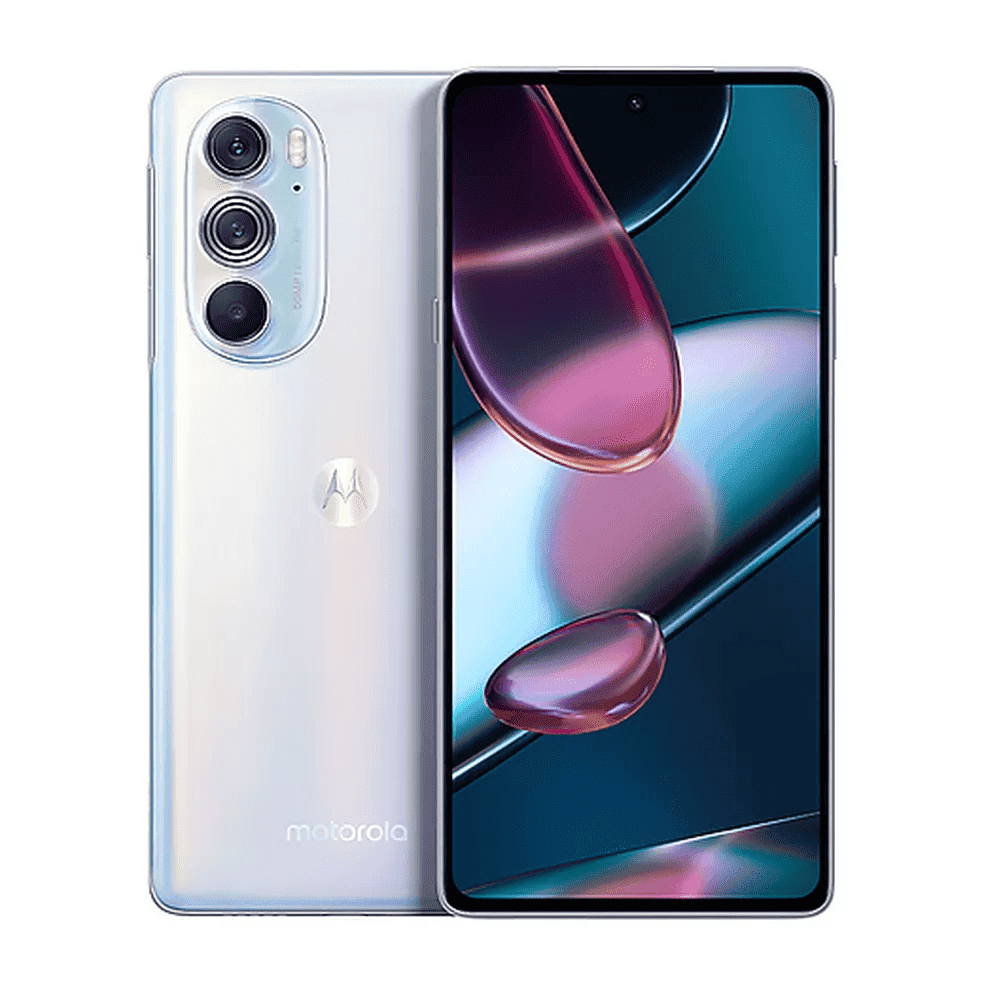
Motorola Edge X30
We start our list with the excellent Motorola Edge X30. This device was released by Motorola in the last month and makes it to our list of best smartphones for media consumption in 2022. There are two particular versions of this handset. The first one has a punch-hole camera, while the second comes with an under-screen camera. Putting that aside both devices are identical. It's one of the hottest flagships for the beginning of 2022 and certainly has a special place among the best smartphones for media consumption.
The device sports a gorgeous 6.7-inch OLED display with a Full HD+ resolution and a 144 Hz refresh rate. The panel also has HDR 10+ support and 700 nits of peak brightness. There is a Special Edition of the smartphone with an under-screen camera. The regular variant packs a tiny punch hole cutout below the earpiece for the 60 MP camera. That’s right, Motorola has equipped this handset with an impressive 60 MP selfie snapper with a 1/2.8 sensor size.
Moving around the back, the device has a 50 MP camera from Omnivision. It’s the OV50A 1/1.55″ sensor with Optical Image Stabilization. It has 2.0um sized pixels when 4 in 1 pixel binning is applied. There’s a second 50 MP ISOCELL, S5KGM1 ultrawide shooter while the third sensor is a 2 MP depth of field module. Users can record up to 8K resolution.
The Motorola Edge X30 carries the Qualcomm Snapdragon 8 Gen 1 chipset with up to 256 GB of Internal Storage and up to 12 GB of RAM. The Snapdragon 8 Gen 1, for starters has a 1 x 3.00 GHz ARM Cortex X2 + 3 x 2.50 GHz ARM Cortex-A710 cores + 4 x 1.80 GHz ARM Cortex-510 cores and is powered by an Adreno 730 GPU. This SoC can handle anything in Google Play Store, meaning that social media apps will be a breeze and you'll also be able to play demanding games with maximum graphics settings and smooth frame rate.
The device draws powers from a 5,000 mAh battery with 68W fast charging. This is the first flagship from Motorola to break the 40W+ charging barrier. The device runs Android 12 in a close-to-vanilla form. The flagship also has stereo speakers but lacks a 3.5 mm headphone jack. The handset has Wi-Fi 6e, Bluetooth 5.2 with A2DP with LE. It also has GPS with GLONASS, BDS, and GALILEO. Finally, there is NFC support for contactless payments.
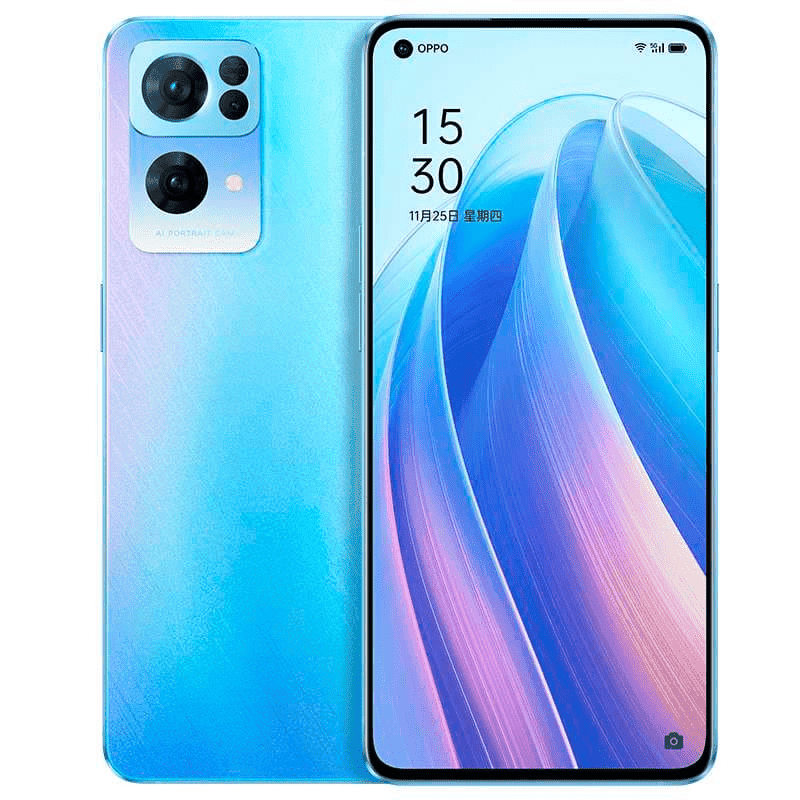
Oppo Reno7 Pro
The next device on our list is the Oppo Reno 7 Pro. This device was unveiled in late November in China and is finally making its way to international markets early in the next month. The Oppo Reno 7 Pro is an excellent smartphone for those who want a premium feeling and also good flagship-tier specifications. The device is an excellent choice for media consumers lovers thanks to its capable battery and the super-fast charging that Oppo provides. Therefore, it certainly deserves a place in our list of best smartphones for media consumption.
The Oppo Reno 7 Pro flaunts a gorgeous 6.55-inch AMOLED display with a 90 Hz refresh rate and Full HD+ resolution of 2,400 x 1,080 pixels. The display has 920 nits of peak brightness, HDR 10+ support, 20:9 aspect ratio, and is covered with Corning Gorilla Glass 5.
Under the hood, the Oppo Reno 7 Pro packs a MediTek Dimensity 1200 Max SoC which is a tweaked version of the chipset that delivers extra performance. The chipset is based on the efficient 6 nm architecture and brings a capable Mali-G77 MC9 GPU for games. The handset has up to 12 GB of RAM with 256 GB of UFS 3.1 Internal Storage, but there is also a variant with 8 GB of RAM. The Oppo Reno 7 Pro runs Android 11 with ColorOS 12.1 but should see an update to Android 12 soon.
In terms of optics, the Oppo Reno 7 Pro has a 50 MP camera with an f/1.8 aperture, 24 mm (wide) lens, and PDAF. There is also an 8 MP Ultrawide camera with f/2.2 aperture and 119 degrees of field of view. Last but not least, there is a 2 MP macro snapper with an f/2.4 aperture. For selfies and video calls, the handset also packs a 32 MP camera with f/2.4 aperture, 22 m lens, and 0.8um pixel size.
The device also has stereo speakers for an immersive audio experience. Other features include Wi-Fi 6, Bluetooth 5.2, Full GNSS, NFC, and USB Type C port. The device also has an in-display fingerprint scanner. The handset draws its powers from a 4,500 mAh battery with 65 W fast-charging and reverses charging.
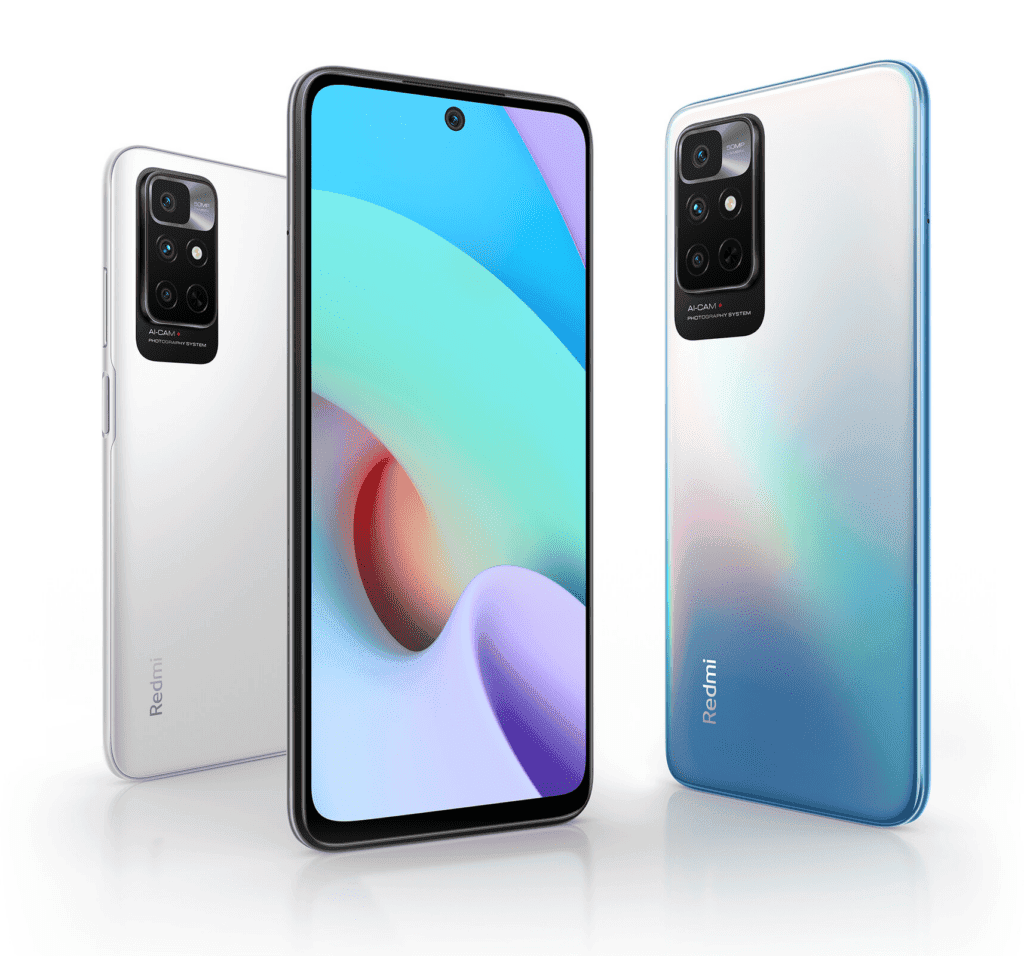
Redmi Note 11 4G (Global)
The Redmi Note 11 4G is yet to be released, but the rumors point out for a launch until the end of the month. So we can already take it as a good option for media consumers lovers. Furthermore, the device already had most of its specifications leaked, so we can already put it among the best smartphones for media consumption.
The Redmi Note 11 4G global variant is quite different from its Chinese counterpart. As a result, the new handset is touted to pack the Qualcomm Snapdragon 680 SoC instead of the Helio G96 or Helio G88. The device may bring up to 6 GB of RAM and 128 GB of Internal Storage. We can't discard variants with 4 GB and even 8 GB depending on the region. The device will also count with a micro SD card slot for further memory expansion.
As per the rumors, the Redmi Note 11 4G global will bring an AMOLED display with a 90 Hz refresh rate. It should be a 6.5-inch panel with 2,400 x 1,080 pixels of resolution and 405 ppi pixel density.
According to the Camera FV5 database listing, the device has a 50 MP primary camera with EIS support. Moreover, the camera has an aperture of f/2.0. We also expect an ultrawide snapper with 8 MP resolution, and two macro and depth snappers with 2 MP resolution. For selfies and video calls, the handset will count with a 13.1 MP Selfie snapper.
Other features include a 3.5 mm headphone jack with true stereo speakers. The device may come with Wi-Fi 6, Bluetooth 5, and full GPS connectivity. It will draw its powers from a massive 5,000 mAh battery with up to 33W charging. Other traditional Redmi features are present like the IR blaster. It runs Android 11 with MIUI 13 straight out of the box, but an update for Android 12 should come soon after its release.
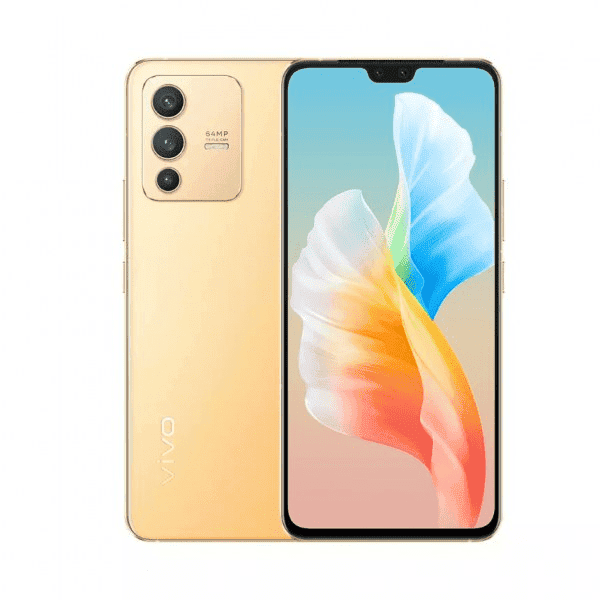
Vivo V23 5G
The next device to sit among the "best smartphones for media consumption" is the Vivo V23 5G. The new handset was released earlier this month by Vivo India. It's based on the Chinese Vivo S12 series and it is one of the best smartphones for photography. The device also brings a sleek body and very good specifications. It's a lightweight media runner that you'll carry with a lot of style thanks to an interchangeable-color paint in the back panel.
The Vivo V21 5G flaunts a 6.44-inch AMOLED display with a 90 Hz refresh rate and HDR 10+ support. The device also boasts a Full HD+ resolution with 2,400 x 1,080 pixels, 20:9 aspect ratio, and 409 ppi density. The device comes with a not very traditional Schott Xensation Up protective coat.
Under the hood, the Vivo V21 5G packs a MediaTek Dimensity 920 processor. This is a beefed Dimensity 900 with 2 x 2.5 ARM Cortex-A78 cores plus 6 x ARM Cortex-A55 core with 2.0 GHz clock speed. For graphical purposes, there is a Mali G68 which may run most of the games in the Play Store without any hassle. The device has variants with 8 GB of RAM with 128 GB Storage and 12 GB of RAM with 256 GB of Internal Storage. Unfortunately, you can't expand the storage as it lacks micro SD card support. The handset runs Android 12 OS with Funtouch OS 12 running on top.
Moving on to the optics, the Vivo V21 5G packs a 64 MP primary camera with an f/1.9 aperture, 26 mm wide lens, and PDAF. There is also an 8 MP ultrawide camera with f/2.2 aperture, 120 degrees field of view, 16 mm lens, and 1.12um pixel size. Finally, this setup brings a 2 MP macro camera with an f/2.4 aperture. The device shines in the selfie department thanks to its impressive selfie camera setup. The device has a small notch for a dual-camera setup. It brings an impressive 50 MP camera with f/2.0 aperture and an 8 MP secondary snapper with an ultrawide 105 degrees field of view. This notch also has a dual-LED dual-tone flash with HDR.
The device has a single loudspeaker and lacks a 3.5 mm headphone jack. The handset has Wi-Fi 5.0 dual-band, Bluetooth 5.2, GPS, and NFC support. There is also a USB Type C port. It also comes with an under-display fingerprint scanner and runs a 4,200 mAh battery with a 44 W fast-charging.
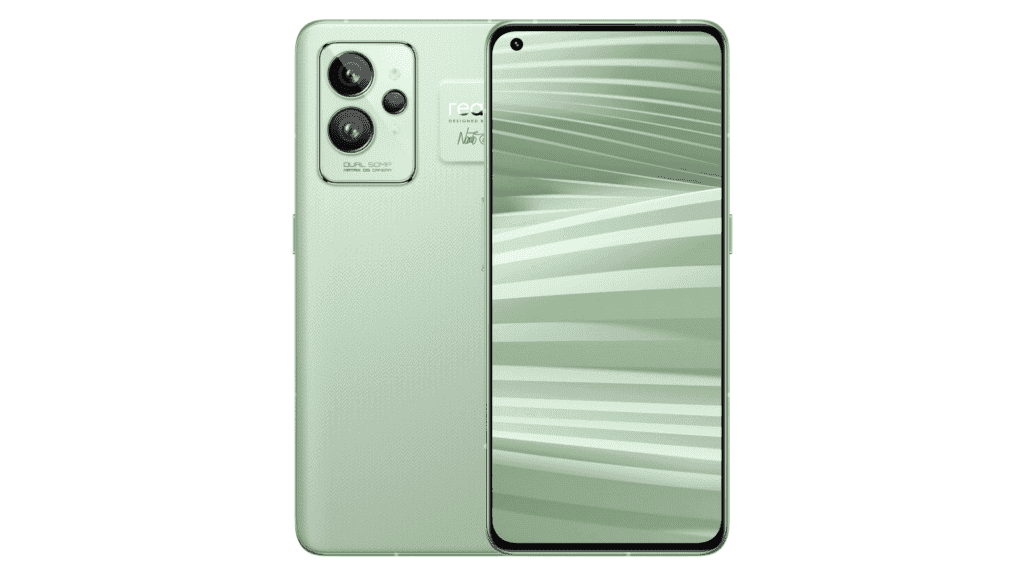
Realme GT 2
The first Realme smartphone for our list is one of the Realme firsts for 2022. The company unveiled its Realme GT 2 series much earlier than the established time with the original 5G. The device is available in China at this moment, but we may see it going global in the next month. The device can be considered a refresh for the original Realme GT 2 since it brings some upgrades but retains the very same chipset. But still, it's one of the best smartphones for media consumption in January 2022.
The Realme GT 2 packs a 6.62-inch AMOLED display with a whopping 120 Hz refresh rate and 1,300 nits of peak brightness. The device has a Full HD+ resolution with 2,400 x 1,080 pixels, 20:9 aspect ratio, and Corning Gorilla Glass 5.
Under the hood, we have the Qualcomm Snapdragon 888 5G SoC with its Cortex-X1 core and Adreno 660 GPU. It was the 2021 flagship SoC and should still be considered one of the best chips in the market right now. The device can easily single-hand any game on Google Play Store, so you won't have any hassle playing your media content. The handset has up to 12 GB of RAM and 256 GB Of Internal Storage. In China, there is a variant with 8 GB and 128 GB which brings the price of the device to a low point. However, it's unclear if all variants will make it to global markets.
In terms of optics, the Realme GT 2 has a 50 MP camera with an f/1.8 aperture and omnidirectional PDAF. The camera also has Optical Image Stabilization, which is something that the original GT lacked. The device also has an 8 MP ultra-wide camera and a 2 MP macro shooter. Other features include dual-tone LED flash, HDR support. For selfies and video calls, the device brings the usual top-left punch hole comprising a 16 MP snapper.
The Realme GT 2 enhances the experience thanks to stereo speakers. There is also Wi-Fi 6, Bluetooth 5.2, GPS with full A-GPS, GLONASS, BDS, GALILEO, and QZS support. There is NFC and a USB Type C port. The handset boasts an in-display fingerprint scanner and brings Realme's traditional 65 W fast-charging. It also improves the battery department with a larger 5,000 mAh unit. The handset runs Android 12 with Realme UI 3.0 running on top.
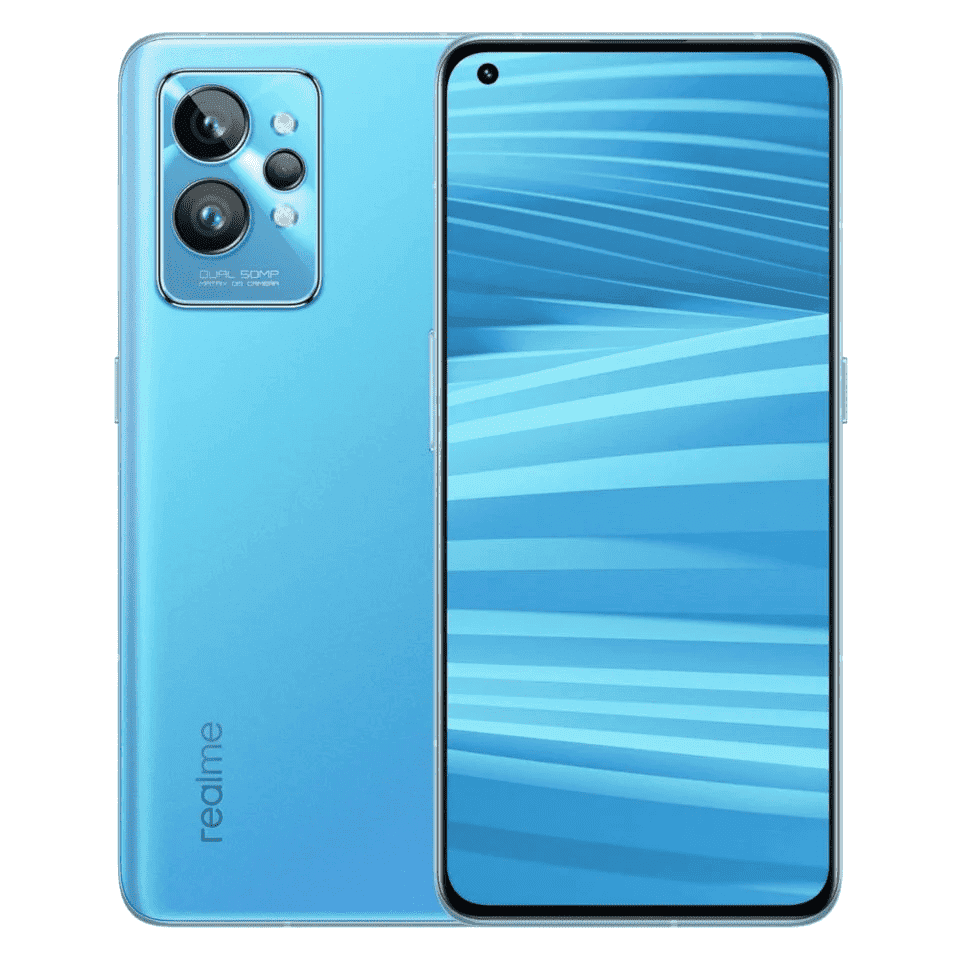
Realme GT 2 Pro
There is one smartphone higher than the regular GT 2, and it's the Realme GT 2 Pro. For those who want a real 2022-flagship experience, this device is the best take. It has a better set of specifications and is on par with the current and upcoming 2022 flagships.
The Realme GT 2 Pro packs a 6.7 LTPO 2.0 AMOLED display with a 120 Hz refresh rate. The LTPO 2.0 technology means that the device will dynamically adjust its refresh rate from 1 Hz to 120 Hz depending on what is currently shown in the display. The handset also offers HDR 10+ support, and 1,400 nits of peak brightness. Another of this display's highlights is its Quad HD+ resolution, it boasts 3,216 x 1,440 pixels resulting in a 509 ppi density. The handset has a Corning Gorilla Glass Victus.
The Realme GT 2 Pro is another flagship running with the newer Snapdragon 8 Gen 1. The 4 nm powerhouse is accompanied by up to 12 GB of RAM and up to 512 GB of Internal Storage. There are also starting options with 8 GB of RAM and 128 GB or 256 GB of storage if you need. Again, we don't know if all these variants will make it to the global markets. Only time will tell.
In terms of cameras, there are some major upgrades. The first snapper is the same 50 MP main camera with omnidirectional PDAF and Optical Image Stabilization. The second camera is an impressive 50 MP ultrawide shooter with an f/2.2 aperture, finally, we have a 3 MP microscope camera with 40 x magnification. For selfies and video calls, there is a 32 MP camera with an f/2.4 aperture.
The Realme GT 2 Pro also boasts stereo speakers and has up to Wi-Fi 6. Other features include Bluetooth 5.0, full GPS, NFC, and USB Type C port. The device brings the same under-display fingerprint scanner and draws its powers from a 5,000 mAh battery. It charges fastly with 65 W charging and runs Android 12 with Realme UI 3.0 straight out of the box.
The GT 2 Pro is a true king for this list of best smartphones for media consumption.
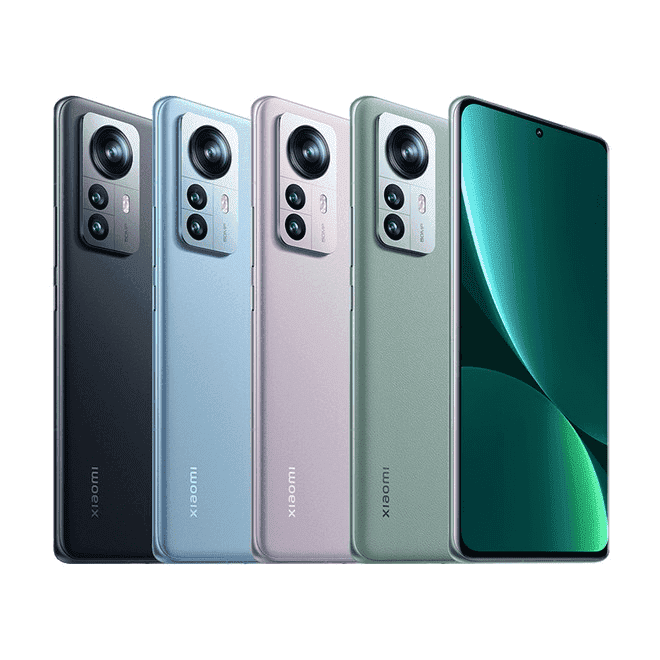
Xiaomi 12
The Xiaomi 12 is another of 2022's flagships bringing top-tier specifications. The device arrives as a direct sequel for the compact Xiaomi 11 and brings some significant upgrades. It will soon reach global markets and already marks its presence among the best smartphones for media consumption.
The device has a 6.28-inch OLED display with a 120 Hz refresh rate, Dolby Vision, and HDR 10+ support with 1,100 nits of peak brightness. The device also has a Full HD+ resolution with 2,400 x 1,080 pixels of resolution with a 20:9 aspect ratio and Corning Gorilla Glass Victus.
Under the hood, the device gets a Qualcomm Snapdragon 8 Gen 1 SoC with the Adreno 730 GPU. The handset comes with up to 12 GB of RAM and 256 GB of Internal Storage.
In terms of optics, the Xiaomi 12 boasts a 50 MP primary camera with f/1.9 aperture, PDAF, and Optical Image Stabilization. There is also a 13 MP ultrawide camera with 123 degrees field of view. It also has a 5 MP telephoto macro. For selfies and video calls, the Xiaomi 12 counts with a 32 MP snapper with HDR support.
The Xiaomi 12 has stereo speakers with Harmon Kardon support. It also boasts Wi-Fi 6, Bluetooth 5.2, GPS, and NFC. There is also an IR Blaster, USB Type-C port, and in-display fingerprint scanner. It draws powers from a 4,500 mAh battery with 67 W fast charging. It also has 50W wireless charging and 10W reverse wireless charging. The device runs Android 12 straight out of the box and brings the all-new MIUI 13.
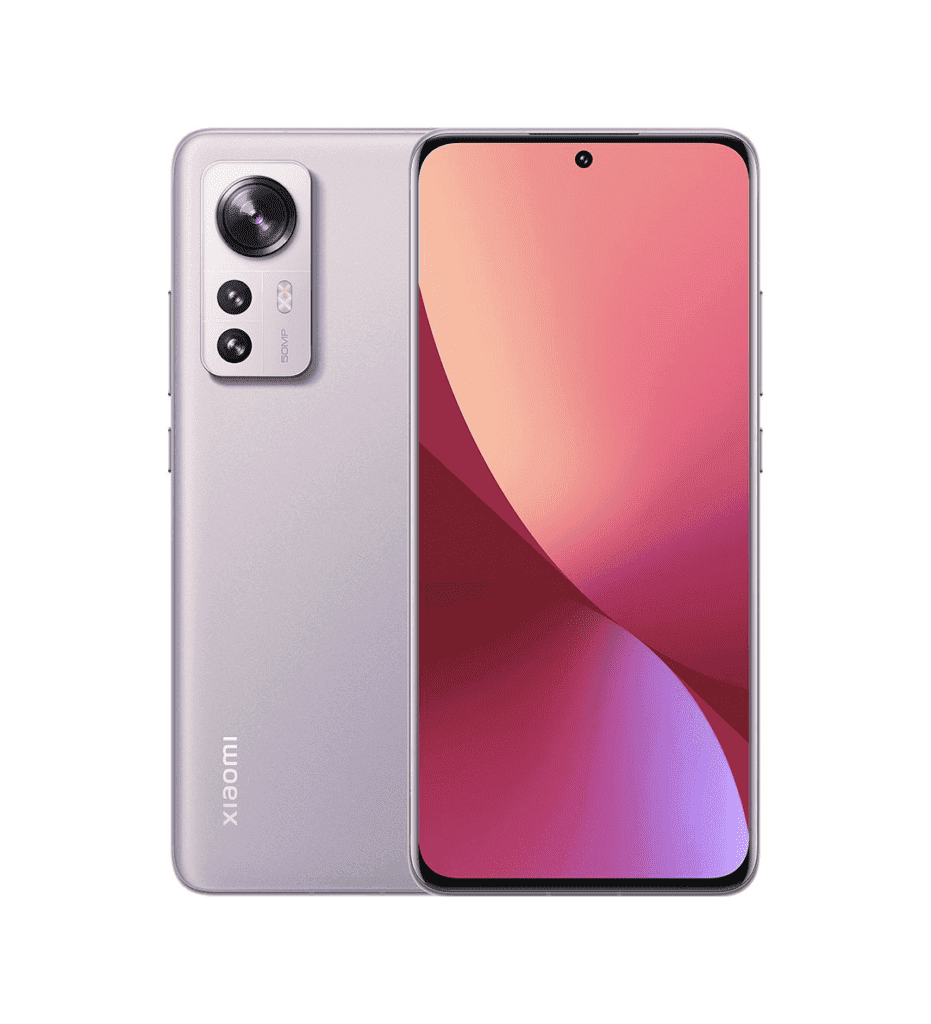
Xiaomi 12X
The Xiaomi 12X is a cost-effective flagship that gives easier access to Xiaomi's 12th gen flagships. It flaunts a 6.28-inch OLED screen with a 120 Hz refresh rate, Dolby Vision, HDR 10+, 1,100 peak brightness. It has a Full HD+ resolution with 2,400 x 1,080 resolution and has Corning Gorilla Glass Victus running on top.
Under the hood, the device has the Qualcomm Snapdragon 870 SoC with 5G connectivity and Adreno 650 GPU. The GPU still has a lot of offers and can easily handle demanding games from Play Store. The device has up to 12 GB of RAM and 256 GB of Internal Storage.
In terms of optics, the device has a 50 MP primary camera with f/1.9 aperture, PDAF, and Optical Image Stabilization. There is also a 13 MP f/2.4 camera with 123 degrees field of view and a 5 MP telephoto macro with Auto Focus. There is also a 32 MP selfie snapper with a 26 mm lens and HDR support.
The handset has stereo speakers tuned by Harman Kardon. The handset also has Wi-Fi 6, Bluetooth 5.2, and GPS. Furthermore, it has a fingerprint scanner, USB Type C port, and 4,500 mAh battery with 67 W fast-charging.
The Xiaomi 12X stands as a good option for the market and deserves a place among the best smartphones for media consumption.
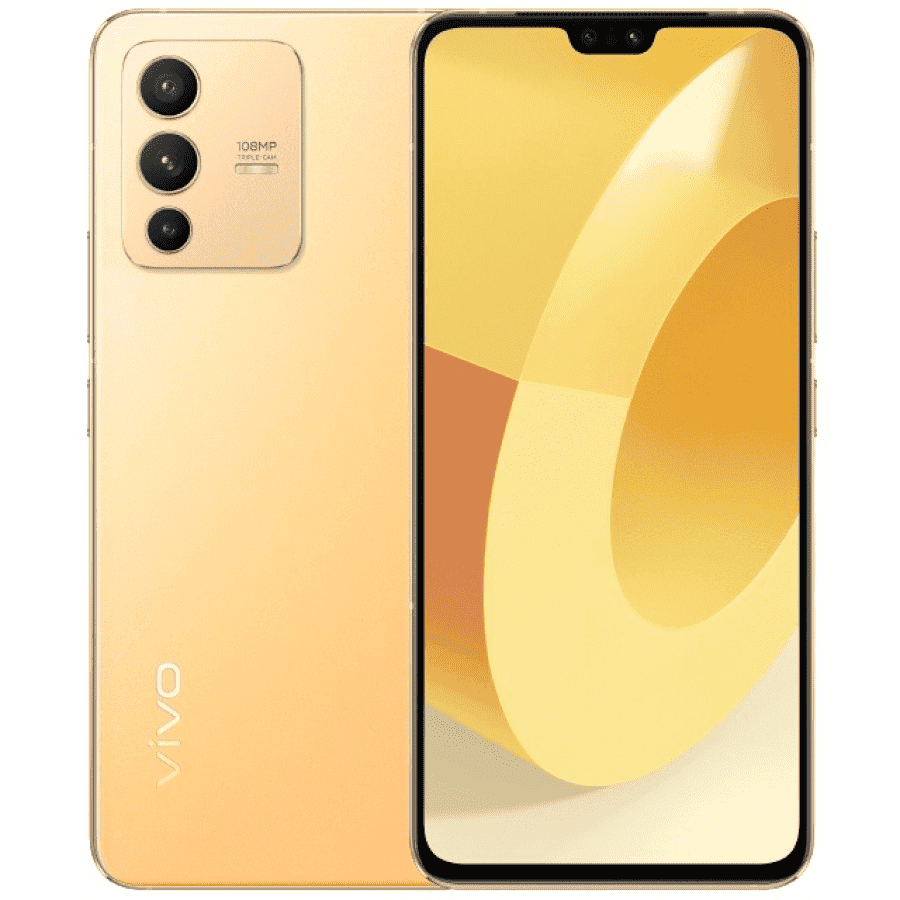
Vivo V23 Pro
The Vivo V23 Pro is the higher brother in the V-series. It gets extra performance powers and higher camera capabilities.
The Vivo V23 Pro flaunts a gorgeous 6.56-inch AMOLED screen with a 90 Hz refresh rate and HDR 10+ support. The panel also has Schott Xensation a glass coating and a Full HD+ resolution with 2,376 x 1,080 pixels.
Under the hood, the handset has a MediaTek Dimensity 1200 SoC with 6 nm architecture. Under the hood, the handset has a higher Dimensity 1200 SoC with a Mali-G77 MC9 GPU. It also has up to 12 GB of RAM and 256 GB of Internal Storage.
Moving around to the back, the handset has a 108 MP camera with PDAF and f/1.9 aperture. Moreover, there is an 8 MP ultrawide camera with an f/2.2 aperture and 120 degrees field of view. Last but not least, it has a 2 MP f/2.4 macro camera. For selfies and video calls, the handset also has a 50 MP f/2.0 aperture and 8 MP f/2.3 ultrawide snapper f/2.3 aperture.
The handset also has Wi-Fi 5, Bluetooth 5.2, and full GPS support. It boasts an in-display fingerprint scanner, USB Type-C port, and NFC. It draws its powers from a 4,300 mAh battery with 44 W fast-charging support.
The Vivo V23 Pro runs Android 12 straight out of the box with Funtouch OS 12 running on top.
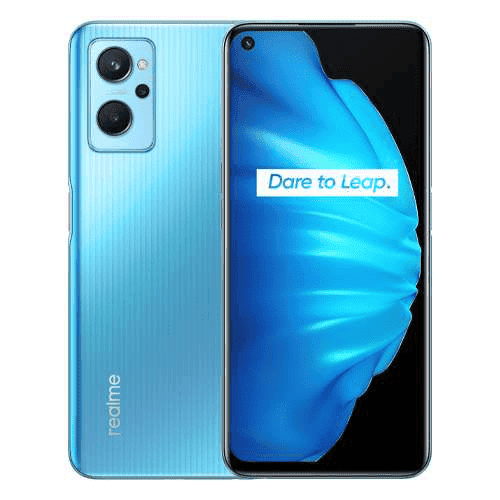
Realme 9i
The last device on our list is a much simpler Realme 9i. The device that starts the all-new Realme 9 generation brings solid specifications and is a worthy contender for the media consumption segment. If you don't want to spend much on a smartphone, the Realme 9i has the necessary guts to make way to our list of best smartphones for media consumption.
The Realme 9i flaunts a 6.6-inch IPS LCD screen with a 90 Hz refresh rate and 480 nits of brightness. The device has a Full HD+ resolution with 2,412 x 1,080, 20:9 aspect ratio, and Dragontrail Pro Glass.
Under the hood, the handset draws its powers from the Qualcomm Snapdragon 680 SoC. This is a brand new chipset release by Qualcomm for the 4G segment. It's quite capable and efficient thanks to the 6 nm architecture. The Adreno 610 can run social media apps without any hassle and demand games should also play fine with moderate settings. The Realme 9i has up to 6 GB of RAM with 128 GB of Internal Storage.
In terms of optics, the device has a 50 MP f/1.8 camera with PDAF, a 2 MP macro, and a 2 MP depth sensor. FOr selfies and video calls, the device has a 16 MP snapper.
The device has stereo speakers and retains the 3.5 mm headphone jack. For connectivity, there is Wi-Fi 5, Bluetooth 5.0, GPS, and a USB Type-C port. The device has a side-mounted fingerprint scanner and a 5,000 mAh battery with 33 W fast-charging support.
BEST SMARTPHONES FOR MEDIA CONSUMPTION – CONCLUSION
And that is our January 2022 list of best smartphones for media consumption. Do you have a particular device in mind to add to this list? Feel free to leave it in the comments section. In the next month, we will be bringing the next batch of better devices for consuming media and exploring social media applications as well as playing games! Be ready. Feel free to check our November list if you want more options, we’ll be back in the next month! The Motorola Edge X30 takes the podium this month, and what device will be the king of February? Could it be the Galaxy S22 series or the Motorola Frontier? Time will tell.






Place comments
0 Comments
You are currently seeing only the comments you are notified about, if you want to see all comments from this post, click the button below.
Show all comments